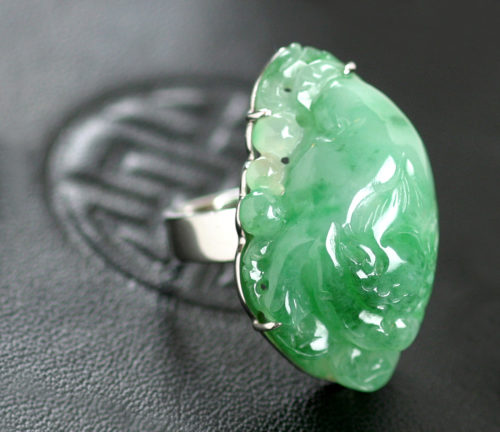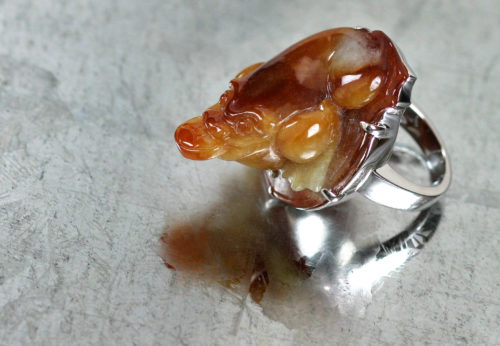The A B C Theory
In Hong Kong and Mainland China, jade is largely categorized under three different classes: A Class, B Class & C Class. People obviously think that A Class represents the top quality of jade and should be most expensive, while B Class and C Class should be lower in terms of quality and value. Only to a certain extent, this statement is true.
The “Classes” used here actually are just a set of definitions for three different types of jade or semi-jade textures that are chemically treated or not. A chemically-treated piece of jade of improved outlook seems to have its value increased especially if the consumer has no idea that it is treated. A piece of untreated and natural jadeite, which is called A Class, of the same colour density and transparency as those of B Class or C Class, is valued a lot more because of its naturalness and rareness.
Anything that is artificially treated to reach the same appearance, such as B Class and C Class jade, will command a much lower value if any to a true collector.
Jade pieces of exceptionally rare quality might be seen in auction house catalogs as they obviously belong to the most expensive categories.
But two pieces of natural jadeite of the same size can have one costing US$5 and the other US$500,000. It all depends on its naturalness, colour, and transparency. An opaque and deep green jadeite costs a lot less than a relatively lighter green but more transparent jadeite. The evenness of colour distribution and many other factors also determine the value of jade.
Although there is no absolute grading system for jade like there are for diamonds or gold, there are indeed three categories to define jade in order to help buyers distinguish what is “real” jade and what is “fake” jade.



